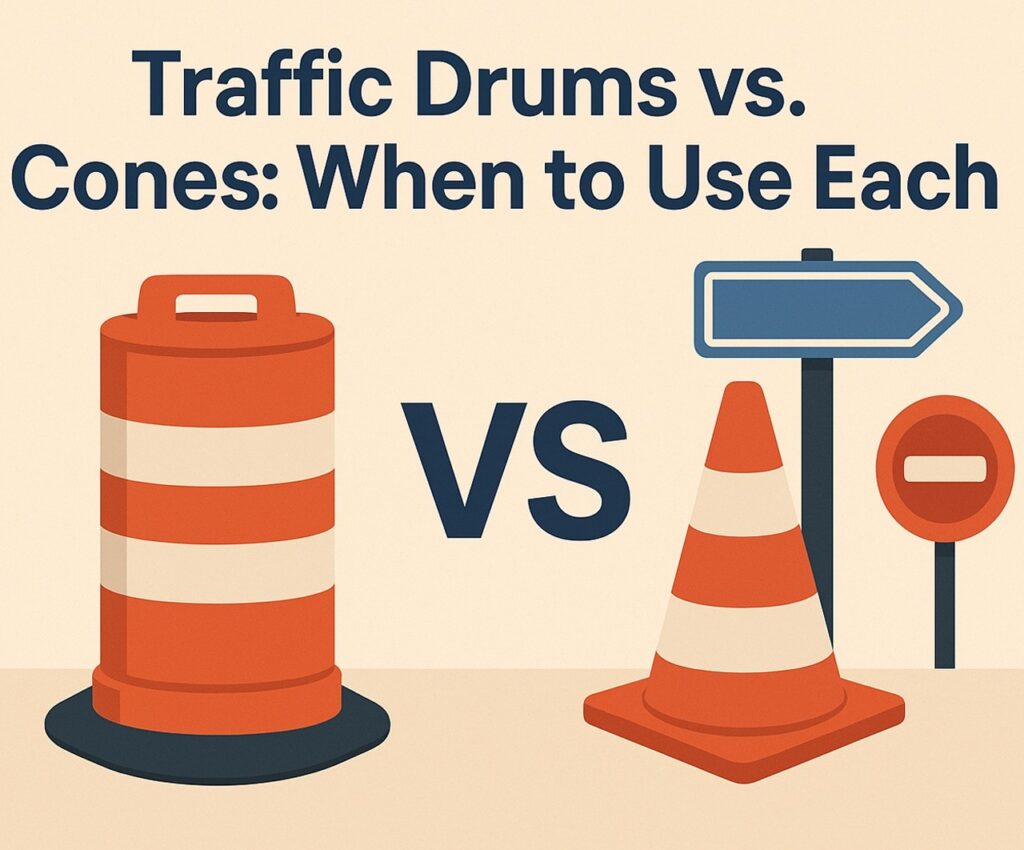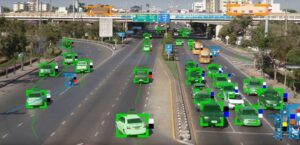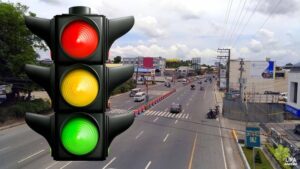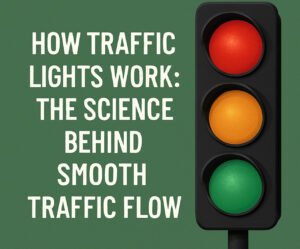In the world of road safety and construction zones, two tools stand out as everyday essentials: the traffic drum, street cones, and traffic control drums. Whether you’re a city planner, contractor, or just curious about what keeps the roads safe during detours and repairs, knowing when to use each of these traffic control devices can make a major difference. While they may look simple, their uses are strategically planned to optimize visibility, protection, and compliance. Know more..
What Are Traffic Drums?
A traffic drum—also known as a construction barrel—is a large, barrel-shaped device made typically from high-density polyethylene. These drums are designed to be highly visible both day and night, often adorned with reflective tape and sometimes weighted with rubber bases to withstand wind and vehicle drafts.
Unlike street cones, which are lightweight and easily portable, traffic control drums are meant for longer-term projects. Their size and structure offer more visual authority and physical deterrence, making them ideal for guiding traffic around more hazardous or extensive work zones.
What Are Street Cones?
Street cones—or traffic cones—are lightweight, cone-shaped markers used for temporary control situations. You’ve seen them at event parking areas, minor road works, or school zones. They’re quick to set up, easy to move, and cost-effective.
While street cones lack the sheer presence of a traffic drum, their versatility makes them invaluable. Cones can be deployed by a single person in seconds and can be arranged in tight formations for precision guidance.
The Case for Traffic Drums
So when is a traffic drum your go-to option? Here are situations that warrant the use of traffic control drums:
- High-Speed Roads: On highways and busy arterial roads, the size and stability of traffic control drums ensure drivers see and respect the barrier.
- Night Work: With high-intensity reflectivity, traffic drums are more visible at night or in poor weather.
- Long-Term Projects: For construction zones that last several days or weeks, traffic drums provide a more robust and lasting solution.
- Pedestrian Protection: In urban zones where pedestrians are rerouted, drums can create more solid visual and physical separations.
The Case for Street Cones
On the flip side, street cones shine in flexible, short-term settings:
- Temporary Lane Closures: For short-duration repairs or inspections.
- Special Events: Parking management, pedestrian control, and crowd routing.
- School and Residential Zones: Where setup needs to be fast and low-impact.
- Emergency Situations: First responders and utility workers use street cones for quick deployment.
Comparing Visibility and Durability
Traffic control drums offer superior visibility thanks to their size and high-mounted reflective bands. Some even come with flashing lights on top for extra attention. Their durability also makes them a better choice for areas with heavy vehicle presence or high wind exposure.
Street cones, while reflective and colored in bright orange, are easier to miss in poor lighting or heavy traffic. They’re also more prone to being knocked over or stolen. However, their advantage lies in their portability and affordability.
Cost and Maintenance
Cost is always a factor in choosing between traffic drums and street cones. Street cones are significantly cheaper, which makes them a favorite for one-off events or low-risk zones. Traffic drums, on the other hand, are an investment but pay off in terms of safety and longevity.
Traffic control drums often require less frequent replacement, as their robust material withstands impact better. However, they are heavier and may need specialized transport, which adds to deployment costs.
Storage and Transport
Street cones can be stacked and stored easily in small vehicles. A single crew cab can carry dozens. Traffic drums, due to their size and base weights, need larger transport vehicles and more manpower for setup. For projects with limited space or rapid deployment needs, street cones are more practical.
Regulatory Use and Compliance
Government regulations also play a role in when to use each. For example, many state DOTs (Departments of Transportation) require traffic drums in high-speed zones due to their safety ratings.
Street cones, while acceptable in lower-risk zones, might not meet requirements in larger construction projects. Always refer to your local or state traffic safety guidelines when deciding.
Combination Usage
It’s not always a choice between one or the other. In many cases, traffic control drums and street cones are used together. Cones might define the internal layout of a work zone, while traffic drums create the outer perimeter for maximum visibility and safety.
A coordinated use of both allows planners to maximize both safety and flexibility. It’s a smart way to stretch the budget while meeting compliance.
Innovation in Traffic Safety
Technology is now merging with traditional tools. Modern traffic drums may include sensors or GPS tracking to monitor placement and movement. Street cones can come equipped with LED bases or solar-powered lights for increased nighttime safety.
Some smart cities are experimenting with connected devices that transmit real-time data about road closures or hazards to navigation apps. Future versions of both traffic drums and street cones could be equipped with RFID chips or Bluetooth for integrated traffic management.
Environmental Considerations
Both traffic drums and street cones are now often made from recycled materials. Many manufacturers are moving toward eco-friendly production methods, ensuring that traffic safety doesn’t come at the environment’s expense.
Additionally, reusable models reduce landfill waste and offer longer life cycles. When selecting traffic control equipment, looking for environmentally responsible vendors is an increasingly important factor.
Final Thoughts
Choosing between a traffic drum and street cones isn’t just about preference—it’s about context. Each has its strengths, and the best safety outcomes come from knowing when and how to use them effectively.
- Use traffic control drums for high-risk, long-term, and high-speed areas.
- Choose street cones for temporary, low-risk, and flexible applications.
- Combine both when needed to maximize coverage and efficiency.
Understanding the unique roles of these tools helps create safer roads, more efficient work zones, and better outcomes for drivers and pedestrians alike.





